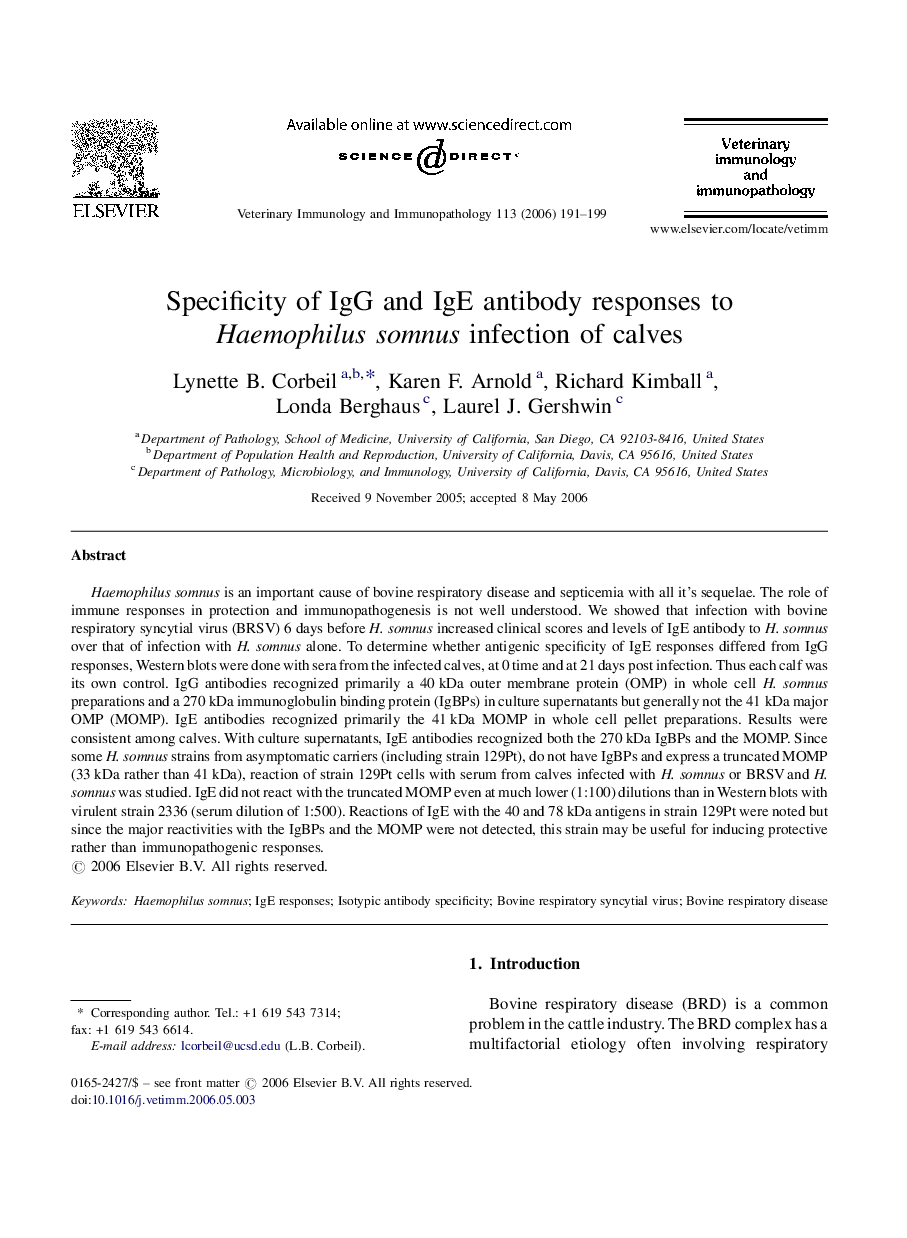| Article ID | Journal | Published Year | Pages | File Type |
|---|---|---|---|---|
| 2463386 | Veterinary Immunology and Immunopathology | 2006 | 9 Pages |
Haemophilus somnus is an important cause of bovine respiratory disease and septicemia with all it's sequelae. The role of immune responses in protection and immunopathogenesis is not well understood. We showed that infection with bovine respiratory syncytial virus (BRSV) 6 days before H. somnus increased clinical scores and levels of IgE antibody to H. somnus over that of infection with H. somnus alone. To determine whether antigenic specificity of IgE responses differed from IgG responses, Western blots were done with sera from the infected calves, at 0 time and at 21 days post infection. Thus each calf was its own control. IgG antibodies recognized primarily a 40 kDa outer membrane protein (OMP) in whole cell H. somnus preparations and a 270 kDa immunoglobulin binding protein (IgBPs) in culture supernatants but generally not the 41 kDa major OMP (MOMP). IgE antibodies recognized primarily the 41 kDa MOMP in whole cell pellet preparations. Results were consistent among calves. With culture supernatants, IgE antibodies recognized both the 270 kDa IgBPs and the MOMP. Since some H. somnus strains from asymptomatic carriers (including strain 129Pt), do not have IgBPs and express a truncated MOMP (33 kDa rather than 41 kDa), reaction of strain 129Pt cells with serum from calves infected with H. somnus or BRSV and H. somnus was studied. IgE did not react with the truncated MOMP even at much lower (1:100) dilutions than in Western blots with virulent strain 2336 (serum dilution of 1:500). Reactions of IgE with the 40 and 78 kDa antigens in strain 129Pt were noted but since the major reactivities with the IgBPs and the MOMP were not detected, this strain may be useful for inducing protective rather than immunopathogenic responses.
